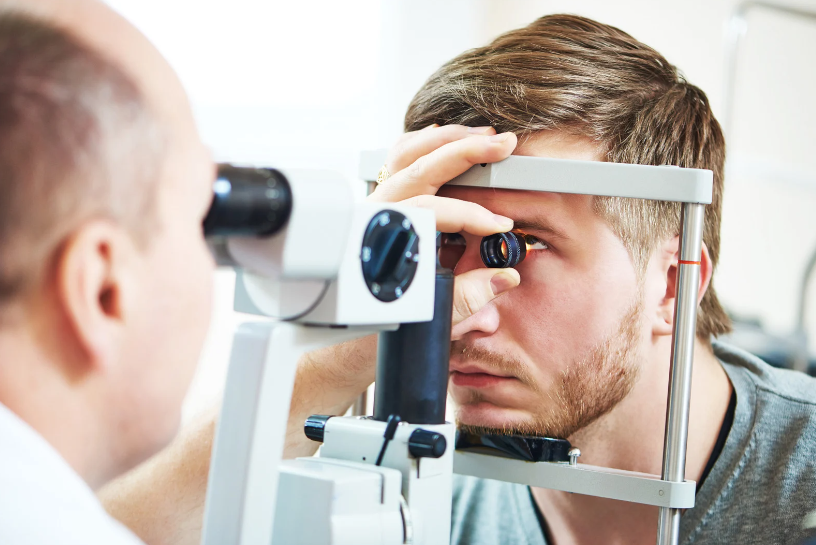Can Bad Eyesight Cause Headaches?
Many people experience headaches occasionally, and various factors can cause them. Blurred vision and blurry vision are common symptoms associated with bad eyesight. One common question that arises is whether bad eyesight can be a contributing factor to headaches.
Severe headaches can also be a symptom of bad eyesight. In this article, we will explore the relationship between headaches and bad eyesight, and whether or not severe pain from one can be a symptom of the other. Can bad eyesight cause headaches? Read more!
- Understanding the Connection
- Recognizing the Symptoms
- Seeking Professional Help
- Preventing Eye-Related Headaches
- Conclusion
Understanding the Connection to Traumatic Brain Injury
It is well known that eye strain can lead to headaches. When the eyes are overworked or strained, it can cause tension in the eye muscles and the muscles around the eyes and in the forehead, leading to headaches. This is especially common in people who spend long hours staring at computer screens or other digital devices. While eye strain can cause headaches over the counter sometimes, most headaches are caused by a primary headache disorder.
Furthermore, suppose you have an uncorrected refractive error, such as nearsightedness, farsightedness, or astigmatism. In that case, it can cause your eyes to work harder to focus, resulting in eye strain and potentially, headaches.
Recognizing the Symptoms of Blurred Vision

If you are experiencing headaches and suspect that they may be related to your eyesight, it is important to pay attention to other symptoms that may indicate a problem with your vision. These uncomfortable blurred vision symptoms can include:
- Blurred or double vision
- Difficulty focusing on objects
- Eye fatigue
- Squinting
- Light sensitivity
- Poor vision at night
- Seeing halos around lights
- Visual disturbances
- Visual symptoms
If you are experiencing any of these symptoms along with your headache triggers, it may be time to schedule an eye exam to determine if your eyesight is contributing to your intense pain and discomfort.
Prevention and Treatment
Regular Eye Exams:
- Update Prescriptions: Ensure glasses or contact lenses prescriptions are up to date.
- Early Detection: Identify and correct eye problems early to prevent blurred vision.
Proper Eyewear:
- Corrective Lenses: Use glasses or contacts that properly correct refractive errors.
- Specialty Lenses: Consider lenses designed for computer use or reading.
Ergonomics and Lighting:
- Proper Lighting: Ensure good lighting to reduce eye strain.
- Screen Position: Position screens at eye level and a comfortable distance.
Breaks and Exercises:
- 20-20-20 Rule: Take a 20-second break every 20 minutes to look at something 20 feet away.
- Eye Exercises: Exercises to strengthen eye muscles and improve focus.
Vision Therapy:
- For Binocular Vision Problems: Therapy to improve eye coordination and reduce strain.
Healthy Lifestyle:
- Hydration and Diet: Maintain good hydration and a balanced diet rich in eye-healthy nutrients.
- Regular Check-Ups: Routine visits to the eye doctor to monitor and maintain eye health.
Seeking Professional Help for Migraine Headaches

If you are experiencing frequent headaches and suspect that they may be related to your eyesight, it is important to schedule an appointment with an eye care professional. An optometrist or ophthalmologist can perform a comprehensive eye exam to assess your vision and determine if you have any refractive errors or other issues that may be contributing to your headaches. Additionally, migraine headaches can also cause visual disturbances and should be evaluated by a professional.
If it is determined by medical attention that your headaches are indeed related to your eyesight, your eye doctor can prescribe corrective lenses, such as glasses or contact lenses, to help alleviate your symptoms.
In some cases, vision therapy or other treatments may be recommended to address underlying issues that are contributing to your discomfort. Traumatic brain injury can cause headaches and blurry vision and should be assessed by a medical professional.
Preventing Eye Strain-Related Headaches
There are several steps you can take to help prevent eye-related headaches and eye disease. These include:
- Taking regular breaks when using digital devices to give your eyes a rest. Taking breaks can help improve blood flow to the eyes and reduce strain.
- Ensuring that your workspace is well-lit and free from glare
- Using proper lighting when reading or engaging in other close-up activities
- Wearing the correct prescription lenses if you have a refractive error
- Practicing good eye hygiene, such as blinking regularly and using lubricating eye drops if your eyes feel dry. It can be prevented by managing stress and ensuring proper ergonomics.
By taking these steps, you can help reduce eye strain and potentially alleviate the headache pain that may be associated with eye strain headache along with it.
Connection of Eyesight and Tension Headaches

Tension headaches, the most common type of headache, can indeed be connected to vision problems. Here are several ways in which it is linked with eyesight.
1. Eye Strain
- Prolonged Focus: Spending long periods focusing on screens, reading, or detailed work can strain eye muscles, leading to tension headaches.
- Uncorrected Vision Problems: Issues like farsightedness, nearsightedness, or astigmatism, if not properly corrected with glasses or contact lenses, can cause the eyes to work harder, leading to eye strain and headaches.
2. Poor Ergonomics
- Improper Viewing Angles: Poor posture and improper viewing angles when using computers or other devices can contribute to both eye strain and muscle tension in the neck and shoulders, leading to headaches.
3. Lighting Conditions
- Inadequate Lighting: Working in dim or overly bright lighting conditions can cause the eyes to strain, increasing the risk of tension headaches.
- Glare: Glare from screens or reflections can also contribute to eye strain and subsequent headaches.
4. Binocular Vision Issues
- Coordination Problems: Issues with the coordination of eye muscles (e.g., convergence insufficiency) can cause difficulty in focusing and lead to headaches due to the extra effort required to maintain clear vision.
5. Uncorrected Prescriptions
- Outdated Glasses or Contacts: Wearing glasses or contact lenses with an outdated prescription can cause the eyes to work harder than necessary, leading to strain and headaches.
Prevention and Management
To manage and prevent tension headaches related to eyesight:
- Regular Eye Exams: Ensure your prescription is up to date and that any vision issues are properly corrected.
- Ergonomic Workstation: Arrange your workspace to promote good posture and reduce strain on your eyes and neck.
Conclusion
In conclusion, headaches like cluster headaches can indeed be a common symptom of bad eyesight. Vision problems, such as blurry vision, can lead to headaches. If you are experiencing frequent headaches and suspect that they may be related to your vision, it is important to seek professional help. Cluster headaches are another type of severe headache that can be related to eye issues.
An eye care professional can assess your vision and provide the necessary treatment to help alleviate your symptoms. By taking steps to prevent eye strain and practicing good eye hygiene, you can help reduce the likelihood of experiencing headaches related to your eyesight and eye problems. Don’t suffer in silence – if you suspect that your headaches may be related to your vision, schedule an eye exam today.



